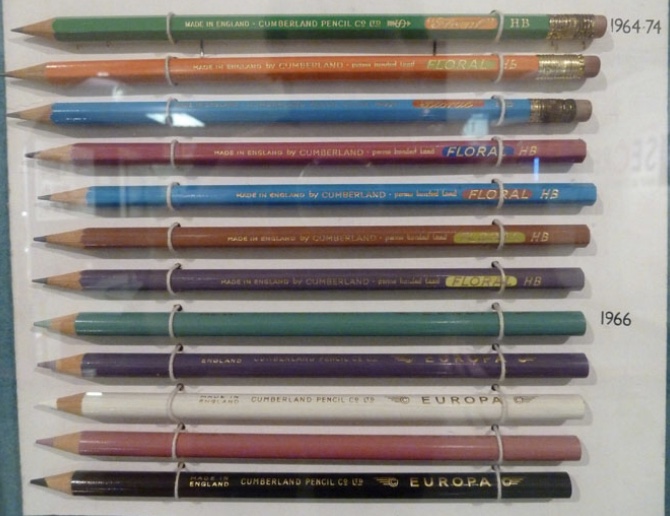The Write Stuff

Feature Date:
16/7/2019
News Story
The last thing one would expect to find among the awe-inspiring mountains, the glittering lakes and cosy picture-postcard villages of the Lake District is a smart, witty, modern little museum devoted solely to the praise of a humble writing tool.
Locating the The Pencil Museum in Keswick is, of course, completely apposite, since it was in the very hills that surround the town that graphite was first discovered in the 1550s, and used by local shepherds to mark their sheep. The manufacture of pencils in Cumbria became a boom industry, bringing vast wealth and prosperity to the area.
Sitting squatly today in the shadow of the now derelict Cumberland Pencil company factory, this little museum tells you everything you will ever want to know about the pencil - its history, its manufacture and its peculiarities. What is a pencil? When was the first one made? How do they get the lead into the wood? What is it made of? All the answers are here.
One of the highlights, for me, was the WW2 pencil. Commissioned by Charles Fraser Smith of MI6 ( the inspiration, apparently, for ‘Q’ in the Bond films), and made in Cumbria, this ordinary looking pencil concealed miniature brass compasses and tightly rolled tissue paper (the ‘non-rustly’ type) maps showing escape routes of Germany. No wonder we won the war!
Also of particular interest was a small exhibition about the eccentric local artist Percy Kelly, an extraordinary draughtsman. His work is linear, graphic and simple, but has huge emotional appeal. Uneducated and prone to depression, Kelly refused to sell any of his paintings in his lifetime, despite being in deep poverty. Today his work is highly sought after.
You cannot miss the giant pencil which dominates the gallery - almost 8 metres long - hanging from the ceiling like a huge missile. There are miniature pencil sculptures, vintage boxes of the first coloured crayons, every imaginable type of pencil sharpener, games and activities for children of all ages, the Queen’s sparkling jubilee pencil, original pencil making machinery and an adorable vintage delivery van parked outside. It is all fascinating and intriguing and very amusing. No wonder the museum has attained cult status in some quarters.
When the Victorians invented modern tourism and started visiting the Lakes in their thousands, they raved about the wild Romanticism of Lakeland scenery. They recorded it, sketched it, composed poetry by the reams, and their trusty writing implement of choice was the portable, erasible and affordable graphite Pencil.
Even in this digital age, this small but perfectly formed museum reminds us not only how profoundly complex are the processes that produce the simple pencil, but of the value of an often overlooked, but supremely useful, inexpensive and ubiquitous everyday object that can hardly be improved on.
